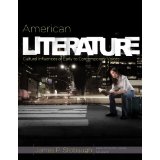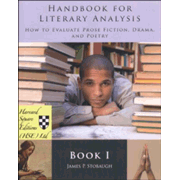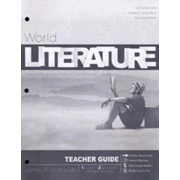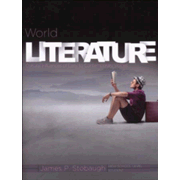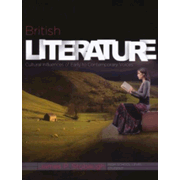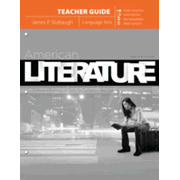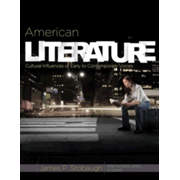I first reviewed Dr. James Stobaugh's literature series more than ten years ago. I really liked the original series, and I like the revised versions even more because they are easier for both parent and student to use.
Dr. James Stobaugh has done a marvelous job of combining literature studies, composition, vocabulary, and critical thinking, all within a Christian worldview context.
The courses include core literature study for American Literature, World Literature, and British Literature. Two supportive books are The Handbook for Literary Analysis and the Christian Reading Companion for 50 Classics. The Handbook for Literary Analysis is intended to be used as a reference and supplemental study resource alongside any of the literature courses. The Christian Reading Companion for 50 Classics might be used by students in middle school through college as well as adults.
In all of these resources, Dr. Stobaugh manages to incorporate worldview concepts in the broad manner of C.S. Lewis so that no particular theological or denominational outlook dominates aside from only occasional and minor exceptions. These courses should appeal to those trying to implement classical education not limited to the Great Books list, to those wanting to prepare their teens with challenging and rigorous coursework, and to those for whom worldview education is a high priority.
In addition, American, British, or World Literature courses might also be combined with Stobaugh's corresponding history courses (now also published by Master Books) to form a comprehensive and tightly integrated humanities program encompassing history, literature, and worldview with a strong composition and vocabulary component.
American, World, and British Literature Courses
Literature courses are written for high school level, each providing 34 weeks of study with daily lessons. For each course, there is a softcover student book and a teacher guide that comes as loose-leaf pages for you to insert into your own binder. Student books are printed in black and white and include some illustrations and graphic images. (All teacher and student books are also available in your choice of three ebook versions.) While these courses should work very well in traditional classroom settings (at Christian schools), they also allow students to complete most of their work through independent study. However, a parent or teacher needs to evaluate essays and grade tests, and most students would benefit from discussion of some of the readings and topics. Some of the weekly chapter tests require essays, and some even have discussion questions.
These courses apply an analytical/critical-thinking approach to literature, for which some students might initially require more assistance than others. Students write at least one essay per week, and some students might need additional instruction in essay writing. The literature courses are challenging, although parents and teachers can adapt the courses significantly by using fewer or more of the essay writing assignments.
Lessons are presented as weekly chapters with five lessons per chapter—one per day. Tests are taken along with the completion of Friday's lesson.
Student books begin each chapter with a list of objectives and introductory comments. On this introductory page, students are given a heads-up of reading that needs to be started this week in preparation for next week's lessons. Students often read entire books, so it is vital that they pay attention to the reminders about required reading. As Dr. Stobaugh recommends, students really should try to read most of the books during the summer prior to taking the course so that the reading schedule does not overwhelm them since it amounts to about 200 pages per week. Students will need access to these works when they get to the lessons, so library loans might or might not work. Many of the works are in the public domain and are available online at no cost.
Many lessons use shorter literary works or excerpts for study on particular topics, and these are included within the student text. This arrangement exposes students to a wide array of literary genres including primary source documents, letters, poetry, sermons, and journals as well as novels, autobiographies, historical fiction, and plays. Essays by other students are also included within these courses (although not with every lesson) to give students models of how they might tackle their own essays.
At the beginning of each chapter, students are also reminded that the weekly essay options are found in the teacher guide. Essay assignments are in the teacher guide since the teacher decides which one or more of the three essays to assign each week. Options always include at least one essay that has a worldview perspective. Student assignment pages at the end of each lesson advise students as to which stage of their essay writing they should have accomplished. The three essay questions with summaries of key ideas that students should include are found at the end of each chapter in the teacher guide.
Those correlating Stobaugh's history courses with these literature courses will find the corresponding history text chapter shown at the bottom of the introductory page of each chapter.
After reading the introductory page, students simply read through each day's lesson and complete the assignments at the end of the lesson. The first assignment is a “daily warm-up.” Students can write, give an oral response, or have a discussion about the question posed in each warm-up. Students often need to have read the lesson before they can respond to the warm-up, so this might not be done as the first activity in a group class as you might expect. These are intended to be relatively brief activities although some might inspire lengthier written responses or involved discussions.
Each lesson also includes a “concept builder” to be completed after the reading and any discussion. This might consist of simple questions, but more often it features a graphic organizer that helps students to develop literary analysis skills. These should take about 15 minutes to complete each day.
Students should spend some time each day working on their essays and assigned reading. The introduction to each book suggests that students create vocabulary cards so that they consciously expand their vocabulary as they encounter unfamiliar words in their reading. Students are also encouraged to maintain a daily prayer journal in conjunction with their reading and reflection.
The teacher guides for these courses are essential. They include each lesson's list of student assignments, chapter tests, and answer keys for concept builders, essay questions (key points students should cover), and chapter tests. There's also a suggested system for grading and a page on which to record grades.
All of these courses require a great deal of writing and reading since these are whole-book, essay writing courses. Contrast this with the typical high school course with a single anthology from which students read and the paragraph-length responses generally required along with possibly one or two essays. While the teacher guides for Stobaugh's courses suggest 45 to 60 minutes per lesson, students will spend additional time on the reading and writing. Teachers really should not try to save time by picking and choosing among the lessons and reading assignments since the lessons were designed to build chronologically as well as in terms of literary development and worldview concepts. The essays are the point of most flexibility, but students really should compose at least one per week. Chapter tests have an unusual variety in the types of questions and responses required. They also help students to make connections between the various readings for the week. While the tests could be skipped, I recommend using them.
There is a link (found on page 7 in each teacher guide) to the publisher's website for printable versions of concept builders, weekly essay options, and tests. These will be especially helpful for those purchasing ebooks, since they sometimes cannot be printed.
American Literature
The first lesson in this book helps students develop their own worldview, which is then applied to reading assignments throughout the lessons.
Like most high school literature courses, this one includes many short stories and other short readings such as “Sinners in the Hands of An Angry God” and poems by Edwin Arlington Robinson and Ralph Waldo Emerson. Unlike other courses, it also requires students to read twenty complete books or plays. Among them are The Scarlet Letter, The Adventures of Huckleberry Finn, Billy Budd, Ethan Frome, The Red Badge of Courage, A Farewell to Arms, The Unvanquished, and The Crucible.
Historically, it begins with native Americans and the Puritan settlers then continues chronologically through the twentieth century.
World Literature
Classical educators will find the Great Books well represented within this volume that includes study of The Epic of Gilgamesh, Plato's Republic and The Death of Socrates, “Oedipus Rex,” Divine Comedy (only The Inferno), and The Stranger by Camus. In contrast to the other two courses, there are fewer whole books to read, although some of these are very lengthy. The eight required books are The Iliad, The Odyssey, The Aeneid, Augustine's Confessions, War and Peace, Faust by Goethe, Crime and Punishment, and Cry, the Beloved Country. In addition to the books and works already mentioned, students study writings of early Church Fathers, Scripture passages, The Rubaiyat, The Koran, and works by Chekhov, Camus, Ibsen, and Remarque, along with many others.
British Literature
British Literature begins with the earliest Anglo-Saxon writings with the narrative Anglo-Saxon poem, “The Seafarer,” and continues through the twentieth century. It includes ballads, poetry, sonnets, plays, short stories, essays, novels, and non-fiction books. Some of the authors are Geoffrey Chaucer, Edmund Spenser, Shakespeare, Ben Jonson, Francis Bacon, George Herbert, John Milton, Daniel Defoe, Jonathan Swift, William Blake, John Henry Newman, Robert and Elizabeth Browning, C.S. Lewis, J.R.R. Tolkien, and T. S. Eliot.
Handbook for Literary Analysis
The Handbook for Literary Analysis is not a course, but it's more than a brief reference book. Sure, students can look up the meaning of “allusion,” but they can also see allusions in use in a number of examples drawn from classic literature.
The book's 523 pages are divided into eight areas: allegory, characterization, narration, plot, setting, theme, tone, and poetry. Following these are a glossary of literary terms, recommended reading lists for younger and older students, an index of subjects, and an index of excerpted works. It has an interactive table of contents that allows you to select your target very precisely, a feature that is very helpful in a book this size. For example, you can go directly to “Allegory in Uncle Tom's Cabin, by Harriet Beecher Stowe” where you can read from a student essay addressing this topic, or you can click on '“Lepanto,” by G. K. Chesterton' and arrive at the complete poem that is included for its many uses of metaphors and related figures of speech. Many analytical essays by Stobaugh's high school students are included along with numerous full-color and black-and-white illustrations.
The book is appropriate for junior high students through adults. You can work through the book sequentially or selectively, depending upon your need. The book reads like a literature text with plentiful use of literary excerpts, including many from Scripture, as examples. It also should help familiarize readers with some great literary works. There are no questions or assignments as you would find in a course. Instead, it is expected that the reader will be using it for self-directed education. Parents might assign particular sections for the student lacking self-direction, then follow up with a discussion regarding what they have read.
Note that this book is published by Harvard Square Editions rather than Master Books. You can order it through Stobaugh's For Such a Time as This website or other distributors.





